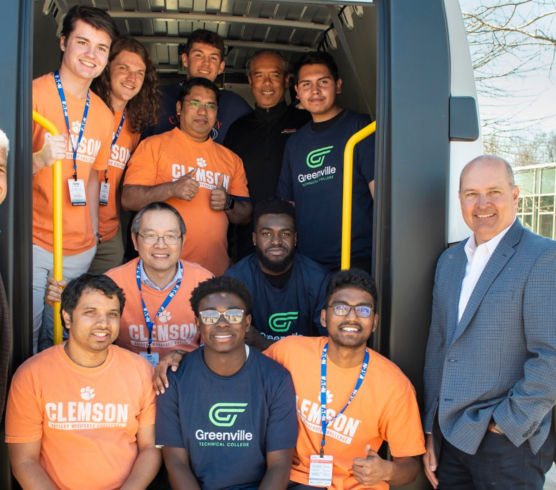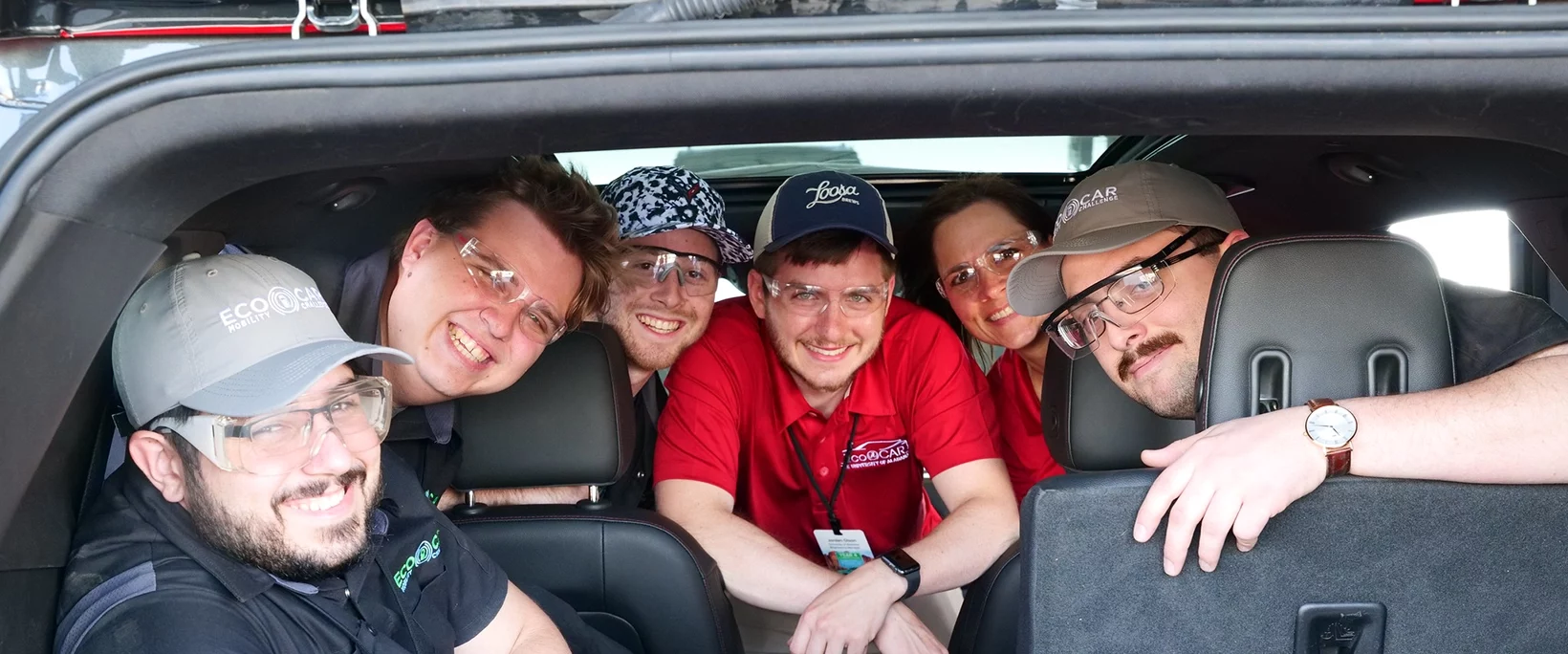For an EcoCAR to run, it needs more than just a body and a motor. While the University of Tennessee, Knoxville (UTK) EcoCAR 2 Team’s mechanical team builds different components of the car, the controls team is tasked with making all of the components work harmoniously. There are four seniors that make up UTK’s controls team along with their leader, Michael Potts, who is earning a graduate degree in Controls Engineering.
Michael Potts working in the controls lab at UTKOne member of the controls team, Jake Hollingsworth, a senior studying Mechanical Engineering, offered a more in-depth explanation of what is required of the controls team. In order for their EcoCAR to function properly, each of the main mechanisms must communicate with each other. To accomplish this, the controls team manages the Electric Control Units (ECUs) of the car. Each major part of the car has an ECU to control component operation and different variables. The controls team has installed several ECUs in UTK’s Chevy Malibu to streamline performance. Each ECU exchanges vital information with other parts of the vehicle and is controlled by the supervisory control unit, MicroAutoBox II. The controls team programs and constantly maintains this control unit.
“My first project was to organize the input and output signals in the MicroAutoBox’s programming,” Jake explained. By using MATLAB and Simulink, Jake and the other members of the controls team can program the supervisory controller. “I organized these input and output signals in Simulink with an add-on software package designed by our sponsor, dSPACE, called MultiMessage. With MultiMessage you can easily manage the many, many signals and control variables that come into and out of the MicroAutoBox.”
Another one of the UTK controls team recent tasks has been running simulations that will be used in the EcoCAR 3 proposal. Team Tennessee hopes to be a part of this next level of the EcoCAR competition. For the controls team, Jake says, “we ran simulations by programming all aspects of a car into a computer interface.” With the help of Autonomie, a program created by the Argonne National Laboratory, the controls team can create a digital model of the vehicle. Using this program, the team can select a type of vehicle (conventional vehicle, hybrid, all electric, etc.) and modify the components and different load cycles of the vehicle. Autonomie will then theoretically predict how the vehicle will perform with the different modifications. By running these mockups through this program, the controls team can determine what should and should not be implemented on the actual car to optimize performance.



